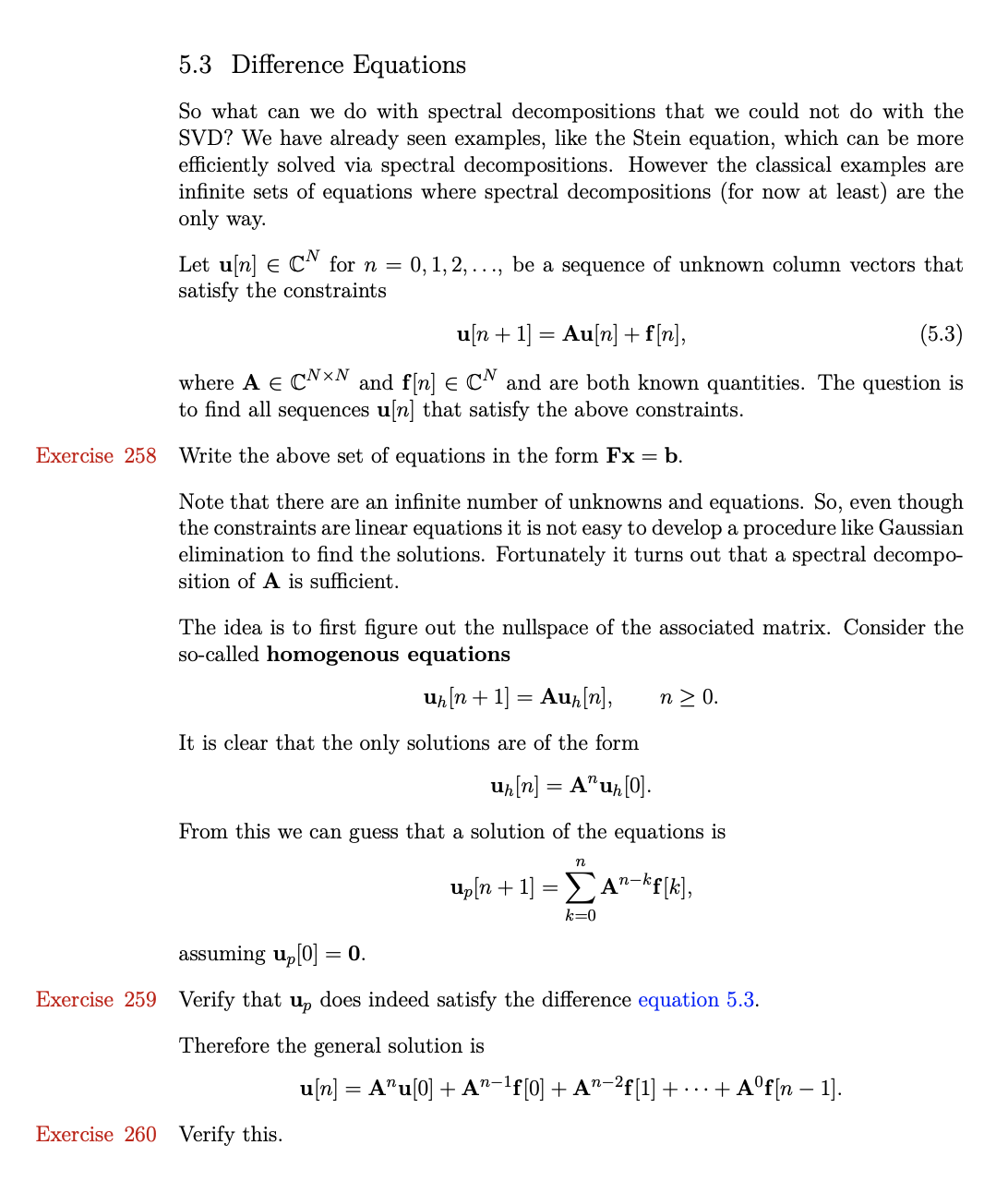Answered step by step
Verified Expert Solution
Question
1 Approved Answer
Could you please help with question 258 and 259? Thanks 5.3 Difference Equations So what can we do with spectral decompositions that we could not
Could you please help with question 258 and 259? Thanks

Step by Step Solution
There are 3 Steps involved in it
Step: 1

Get Instant Access to Expert-Tailored Solutions
See step-by-step solutions with expert insights and AI powered tools for academic success
Step: 2

Step: 3

Ace Your Homework with AI
Get the answers you need in no time with our AI-driven, step-by-step assistance
Get Started


